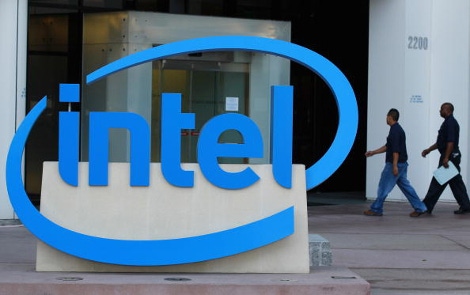Intel's Data Center Business Falls Short of Target, Again
Q1 earnings a warning that Intel's best business, server chips, isn’t living up to expectations
April 28, 2017

Ian King (Bloomberg) -- Intel Corp.’s quarterly earnings served as a warning that its best business, server chips, isn’t living up to the company’s expectations.
The Data Center Group had sales of $4.2 billion in the three months ending April 1, Intel said in a statement Thursday. That’s below the company’s long-term goal of double-digit percentage growth and points to more weakness in corporate buying of equipment.
Under Chief Executive Officer Brian Krzanich, Intel is trying to spread its bets away from a personal computer market that’s been declining since it peaked in 2011. Sales of server chips, which have helped it make up for that fall off in its main market, aren’t expanding as quickly as Intel projected as corporate demand remains stagnant.
“It’s all going to be about data center,” said said Sanford C. Bernstein analyst Stacy Rasgon. “The cloud guys have been building. Intel’s problem is that enterprise has been weak.”
See also: Why Microsoft Says ARM Chips Can Replace Half of Its Data Center Muscle
Intel’s division that provides chips for the PC business again showed growth, expanding revenue by 6 percent to $8 billion. Its memory chips sales jumped 55 percent to $866 million.
Intel Chief Financial Officer Bob Swan said the company is sticking to its long-term target of “low-double digit” percentage growth for the data center unit. For this year the company is predicting expansion in the “high single-digits.” The company is seeing strong orders from cloud data center operators -- a group that includes Facebook Inc. and Amazon.com Inc.’s web services division -- and networking customers, while corporations and government buyers are delaying purchases.
“That continues to be a challenge for us given that it’s the biggest portion of the business,” said Swan. Overall the company “feels good about where we are.”
Intel said the earnings period in the first quarter of 2016 included one more week than this year.
See also: How a Tech Company from the 60s is taking on AI, IoT
Revenue will be $14.4 billion, plus or minus $500 million, in the current period, the Santa Clara, California-based company said. Analysts had projected $14.3 billion, according to the average of estimates compiled by Bloomberg. Intel also lifted its annual revenue prediction by $500 million and added 5 cents to its earnings-per-share forecast for 2017. It’s allocating an addition $10 billion to its stock repurchase plan.
First-quarter net income was $3 billion, or 61 cents a share, compared with $2 billion, or 42 cents a share, in the same period a year earlier. Sales rose 8 percent to $14.8 billion. On average analysts had estimated a profit of 57 cents on $14.8 billion of revenue. Excluding certain items, profit was 66 cents a share. On that basis, analysts had projected 65 cents a share.
PC shipments recorded their first quarterly growth in five years, researcher IDC said earlier this month. While that was a break in a multi-year slide for the whole industry, the gain of less than 1 percent from a year earlier underscored persistent weakness in demand, especially from consumers. Still, that’s better than Intel’s prediction of a decline in the mid-single-digit percent range in 2017.
Intel shares fell in extended trading following the announcement. The stock has lagged its peers this year, gaining 3.2 percent, compared with a 13 percent advance by the Philadelphia Stock Exchange Semiconductor Index.
In March Intel said it would acquire Mobileye NV for about $15 billion, paying one of the highest takeover premiums this century to play catch-up in the market for technology that helps cars drive themselves. The offer, the largest ever for an Israeli company, was a 34 percent more than Mobileye’s closing price before it was announced. Intel estimates the market for vehicle systems, data and services will be worth as much as $70 billion by 2030.
About the Author
You May Also Like









